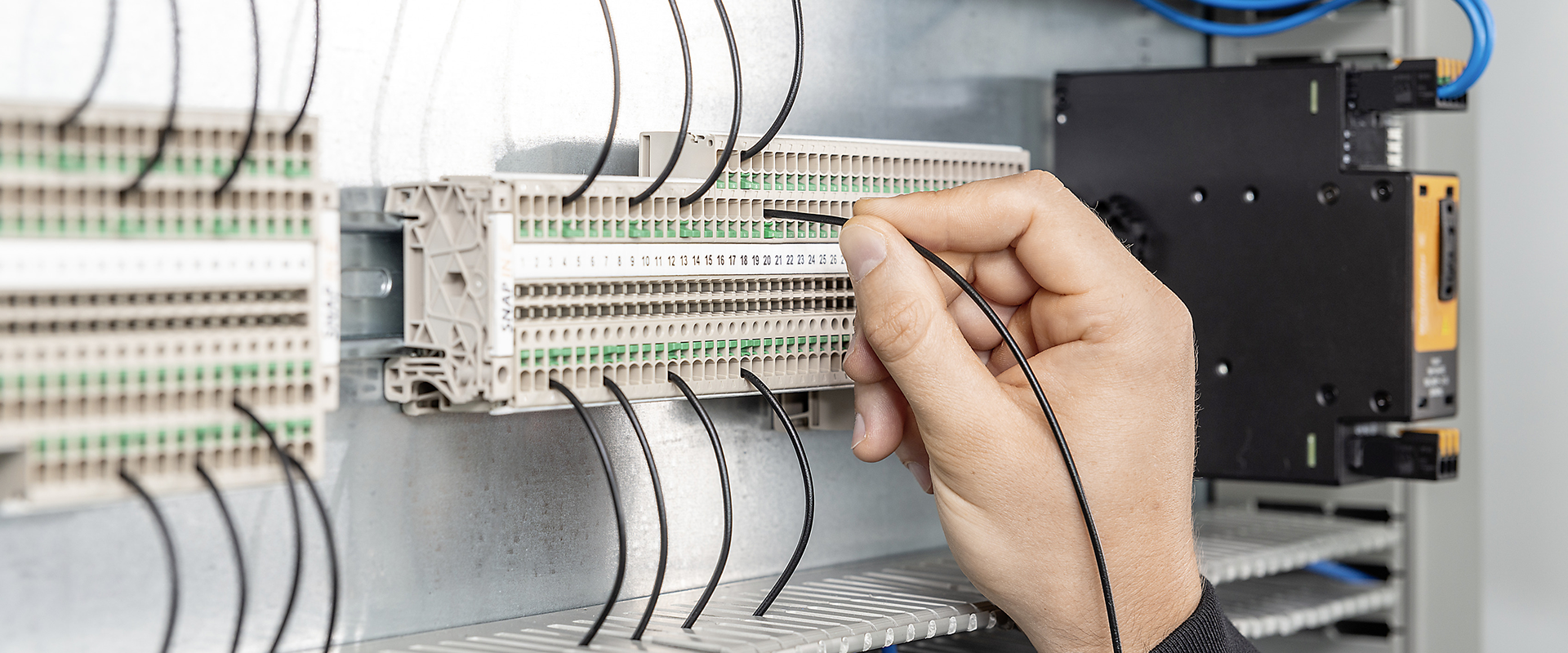Technology in the industrial sector is continuously evolving to meet the demands of the Industrial Internet of Things (IIoT). This new era of industrial connectivity requires facilities to install more sensors to meet the high demand for data from the field. However, wiring these sensors and the associated electrical installation is a time-consuming process. In addition, industrial companies are under increasing pressure to minimise downtime, making it essential to find new ways of optimising the wiring process.
Control cabinet wiring also plays a critical safety role. A loose or faulty connection can corrupt the data transfer leading to unknown or unsafe conditions. Therefore, great care must be taken when building panels and wiring circuits. Each connection must be securely made to minimise the safety risk. In a typical screw connector, this can be achieved using a torque screwdriver and looking for three sensory confirmations:
- Optical confirmation when the connection is visibly secure.
- Acoustic feedback when an audible click sounds on reaching the torque setting.
- Haptic confirmation when the tension on the wire changes after making the connection.
Using a torque screwdriver for each connection in a large wiring cabinet is extremely time-consuming and requires special tools. These constraints have led to the development of new connection designs like SNAP IN technology.
How SNAP IN connection technology works
Connector technology has evolved significantly from the simple screw connector of the past. For example, tension clamp connectors separate the mechanical and electrical functions allowing technicians to use a screwdriver to prise open the connection and insert the wire without setting the torque. Push-in-connectors operate on a similar principle but do not need a tool for wire insertion. SNAP IN connectors have additional features that simplify activating the spring connection while providing sensory confirmation of a secure connection. A further benefit is the suitability of this connection type for wires with or without end-ferrules.
A SNAP IN connector has a preloaded spring for clamping the wire end. As the wire pushes into the connector, it contacts a trigger point, which activates the clamping mechanism. Releasing the wire is as easy as pressing the green pusher using a screwdriver or other tool.
A step-by-step guide to making a connection using SNAP IN technology is outlined below:
- Strip wire end (no other preparation is necessary)
- Insert stripped fine-stranded conductor into the preloaded connection point.
- Listen for the clearly audible click as the trigger mechanism activates the clamping point.
- Push in the green pusher to release the clamp and then remove the wire.
SNAP IN connections offer the same sensory confirmation as torque screwdrivers with a screw connection. Once the wire is inserted correctly and deeply into the contact point, the clamp triggers with an audible click giving acoustic confirmation. The green pusher extends to provide visual evidence of a secure connection. A change in wire tension is also noticeable when the clamp triggers to give haptic feedback to the technician.
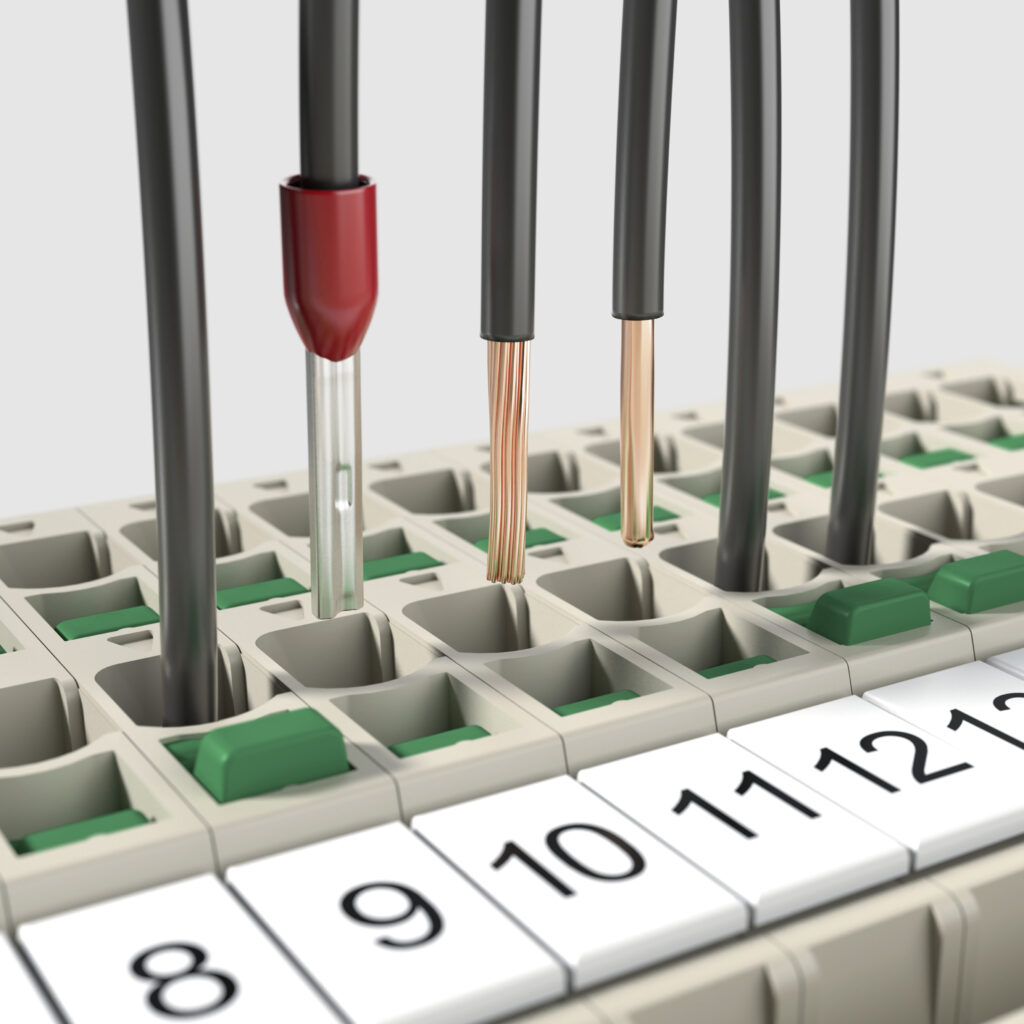
This new connection technology takes wiring to a whole new level as it allows flexible conductors with and without wire end ferrules to be wired quickly, easily and without tools. The result is a gas-tight, and long-term connection that is resistant to vibration. Klippon® Connect terminal blocks from Weidmüller, with SNAP IN connection technology, are both safe and reliable, offering industrial applications a higher level of protection against process interruptions from loose connections
How SNAP IN connection technology enables automation
The drive for faster wiring cabinet installation means that industrial companies are seeking ways to optimise this process in every stage – from planning to panel building and wiring. Technologies that pave the way for future automation are especially attractive as the process is historically almost entirely manual. Robot-assisted panel assembly has the potential to revolutionise the panel building and wiring process for the industrial sector by minimising both time and labour requirements. SNAP IN connections are, therefore, future-ready in the sense that they have features suitable for robot-assisted assembly.
The planning stage
Engineers can plan their terminal strips in the digital space using Weidmüller Configurator (WMC). The system integrates with eCAD to ensure consistent use of data and accurate assembly without human error when moving through the design and implementation stages. Additionally, the terminal strip design from WMC can feed into automation systems for panel building.
The panel building stage
There are two components of the panel building stage, which are labour-intensive and time-consuming, where SNAP IN Connector design can play a significant role:
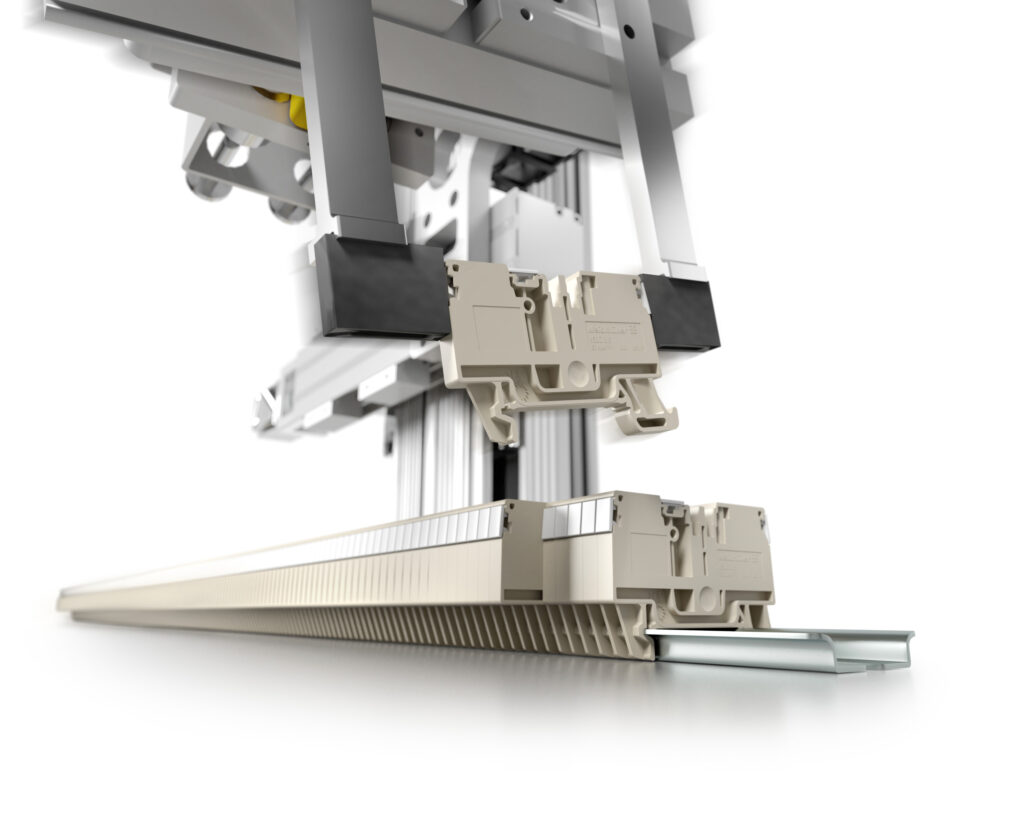
1.Manual Assembly:
The contours of the new SNAP IN S-Series terminal blocks have been designed to be easily gripped and mounted by industrial robots. This feature allows a much higher automation component to the assembly process. Industrial companies can achieve a 60% time-saving in terminal block assembly using SNAP IN connectors with their robot-friendly design.
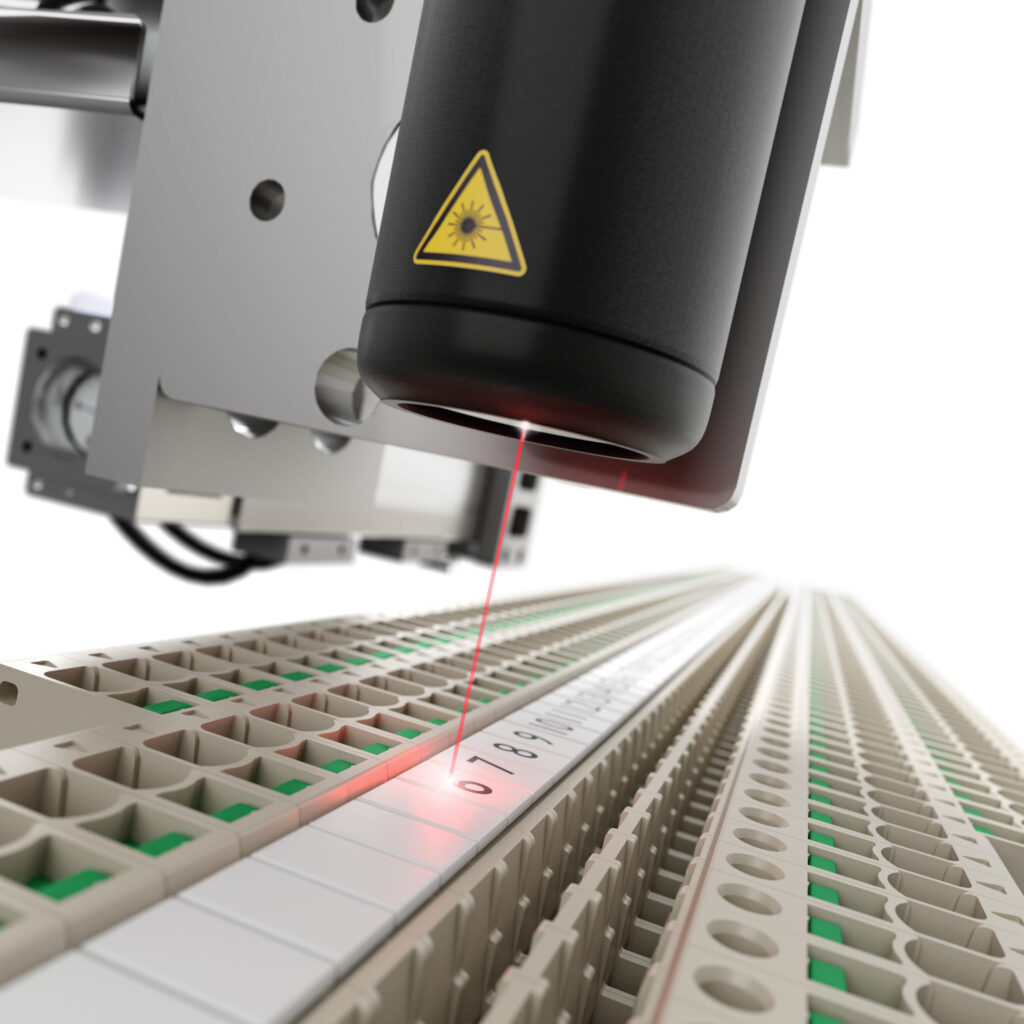
2. Laser Marking:
Connector marking is a critical component of panel building to ensure circuits are wired correctly. Manual marking is slow and is subject to human error. However, SNAP IN connectors are optimally designed for fully automated laser marking. This feature makes it possible to achieve a 90% time-saving in the marking process with fewer errors.
The wiring stage
Space is limited in industrial plants, so cabinet space is at a premium and cabinet rooms are often compact with little room to manoeuvre. Working without tools and simply inserting each wire into the appropriate connector makes it easier for technicians to perform their tasks in these confined environments.
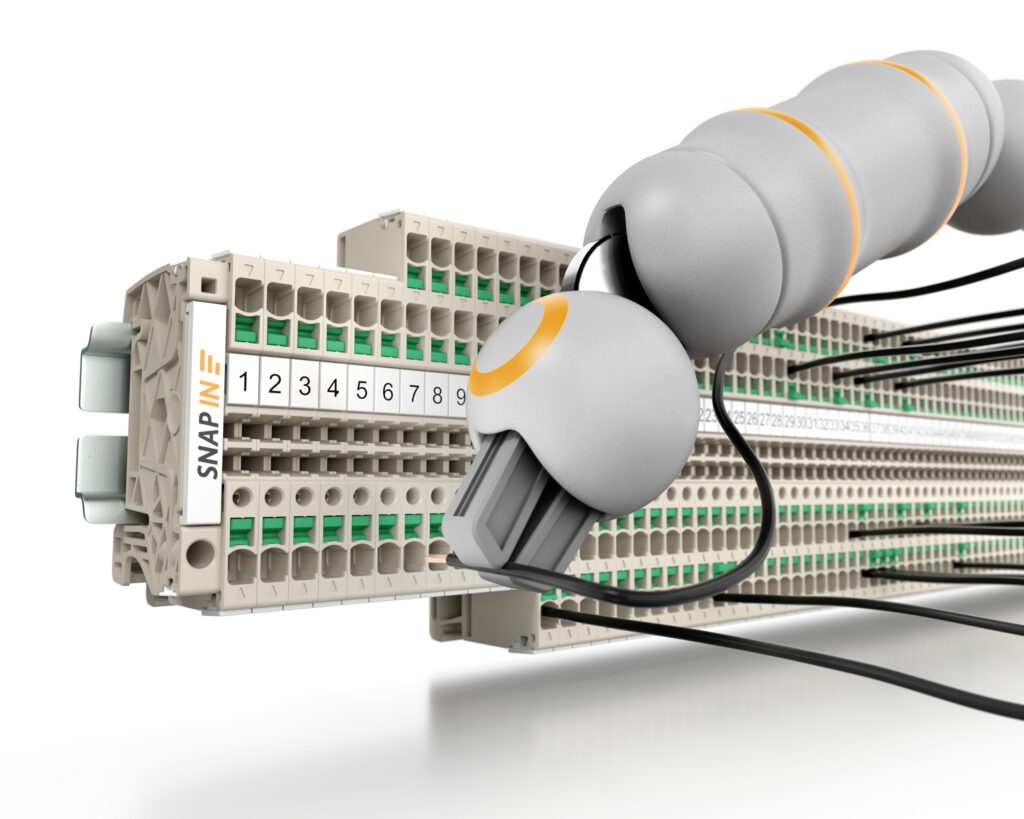
The fact that SNAP IN connectors can work with or without wire-end ferrules also makes the technician’s job more straightforward and efficient. In fact, the open connection point makes the connectors ready-to-robot so that the wiring stage can be automated in future, thus reducing installation time even further.
Conclusion
The industrial sector is making massive strides forward in terms of technology with the proliferation of new smart devices that facilitate the IIoT. More devices require more wiring, yet wiring cabinets are already congested, and space is at a premium. At the same time, building panels and wiring circuits is labour-intensive and time-consuming, making it challenging for industrial companies to reduce their downtime.
SNAP IN connection technology overcomes these challenges with connections that are permanently reliable, safe, and easy to maintain. They are easy to use without tools meaning that technicians can save time during installation. Nevertheless, a secure connection is assured through optical, acoustic, and haptic feedback.
Additionally, SNAP IN connectors are designed with automation in mind. They can be easily gripped and mounted by robots, and they are compatible with fully automated laser marking. Both these features allow for substantial time saving during panel building.
Find more about SNAP IN connectors and the full Weidmüller range here. As a distribution partner, Distrelec offers a broad variety of products designed and built for industrial applications.





